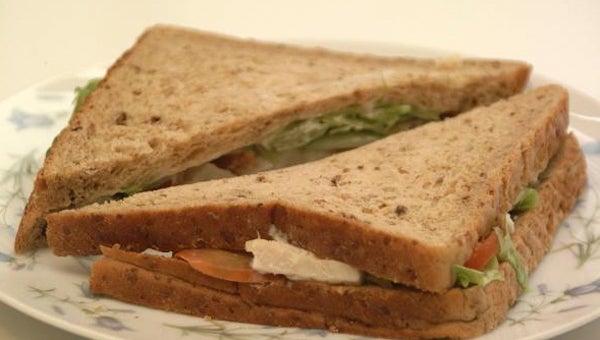Providing healthy meals
Published 9:27 pm Monday, July 18, 2011

When packing your child’s lunch, there are several things to consider. Parents need to make sure their children are getting a balanced diet. A few simple steps can help provide a tasty and nutritious meal. -- Special photo
By Alison McFerrin
The Selma Times-Journal
With the first day of school just around the corner, school supplies will soon be flying off the shelves. But as parents fill the children’s backpacks with paper, binders and #2 pencils, there’s one more item to add to the back-to-school list — a nutritious lunch.
For the parent who chooses to pack lunch, there are a few dietary standards to keep in mind.
“I’m not real keen on the Lunchables,” Vaughan Regional Medical Center director of dietary services Miriam Bearden said. “I think parents need to pay attention to the saturated fat and the high sodium in a Lunchable.”
Instead of a quick fix, Bearden said parents should observe the principles at www.choosemyplate.gov — the new government dietary site.
“Half of what they eat should come from whole grains,” Bearden said. This could come from bread in the sandwich, whole grain crackers, oatmeal or low fat popcorn.
Another lunch essential is fruits and veggies.
“Vary the type of fruits and vegetables that you give them,” Bearden said. “They need a variety to get different vitamins.”
If your child isn’t a fan of vegetables, Bearden said including a low fat dressing for dipping can make them more appealing.
And while it may seem easy to pump the fruits in with a delicious fruit juice, Bearden said this is not the best option health-wise.
“Some parents think that they’re being healthy, giving them juice,” Bearden said. “They get too much sugar, and we have a crisis of diabetes in children.”
Bearden added many fruit juices are less than 80% juice. “You have to really watch all your juices to make sure that they’re real juice,” Bearden said.
Instead, opt for fresh, canned (in its own juice) or dried fruit, and limit fruit juice to 1/2 cup per day.
Protein should be a focus of the meal as well — albeit the smallest portion — but don’t think meat is your only option.
“Peanut butter would be a good thing to do for protein,” Bearden said. “(Another) way to add protein to their lunch is nuts.” Bearden suggested adding nuts or seeds to salads, recommending roasted nuts as opposed to salted.
Calcium should also be a feature of your child’s lunch — milk and cheese are good go-to sources. Of course, milk is also great for washing it all down.
“I highly encourage that they drink low fat milk,” Bearden said, adding it’s best to get this from school, since milk can’t hold up to the heat. Next to milk, Bearden also recommended drinking water.
“They need to stay hydrated with water for their physical activity,” Bearden said. “I think the sugar drinks are the things (parents) put in there the most.”
And while cookies are off-limits if you want to keep your kids healthy, you can still curb that sweet tooth with other yummy treats. Bearden suggested yogurt, low fat pudding cups and Jell-o with fruit — although make sure to include an ice pack to keep these things chilled until lunchtime. Of course, packing a lunch isn’t the only option for healthy eating. School lunches tend to also fulfill all of a student’s daily requirements.
“Schools are mandated to have a balanced diet and to follow the USDA guidelines,” Bearden said. “They have to maintain a menu, and it has to meet government standards.”



